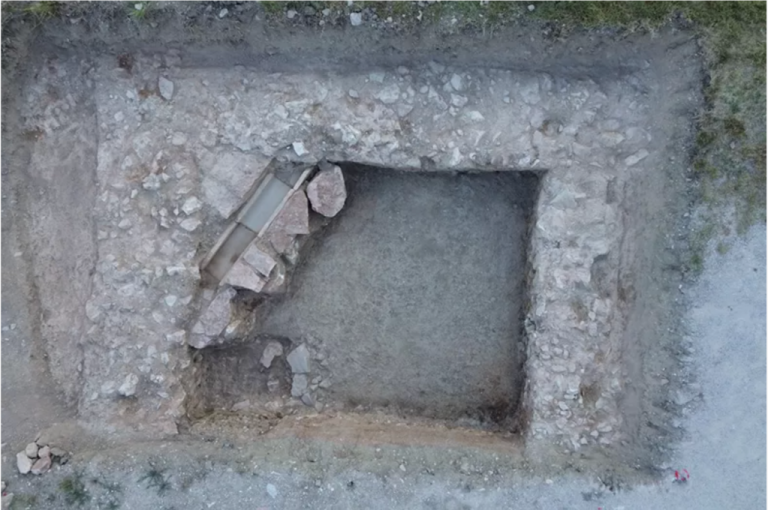The ruins of an ancient pagan Roman temple were discovered by a team of archaeologists in Spelloa hilltop town in northern Italy.
At the site, located near a religious shrine, researchers identified three walls that were part of a massive structure with four-foot-wide foundations. These foundations suggest evidence of a Roman temple dating from the 330s, during the reign of Constantine (306-337 CE), the first Roman emperor to convert to Christianity.
These discoveries shed further light on the transition from pagan to Christian worship within the Roman Empire. The results of the excavations carried out this summer were presented by Douglas Boin, researcher at Saint Louis University, at the annual meeting of the Archeological Institute of America, News week reported.
The team chose this area based on a 4th-century inscription attributed to Constantine, found in the early 1700s and remaining on display at the town hall.
The text addressed to the local community, which became a Roman colony in the 1st century BCE, indicated that the temple was a massive project built at the request of the emperor so that residents could celebrate religious festivals there, rather than having to travel.
However, for it to be built, the temple (and the community) had to honor the emperor’s divine ancestors. This request was not uncommon within Roman imperial worship, in which emperors and notable members of their families were worshiped as deities.
“There was no separation between religion and state in the Roman world, and the Romans’ proud sense of patriotism informed all their public activities, including their worship,” Boin said. News week. “In an empire where people spoke multiple languages, lived on three continents, and clung to their own local traditions, imperial worship brought people together around common ideals.”
The team believes that the temple was used by the pagan inhabitants of Spello and was dedicated to the Flavian family to honor the ancestral line of the emperor. It would have been used for the next two generations until the pagan religion was outlawed.
Although scholars believed the temple existed, it was still unclear exactly where it was located. Perhaps more importantly, it demonstrates a 70+ year shift in Roman society from a pagan society to a Christian empire, as well as Christian support for an imperial cult.
“This building, in a very radical way, shows us the persistence of pagan traditions that had been in place for centuries before the rise of Christianity. We’re about to give people a very visible piece of evidence that really shakes up the neat and tidy way people think about big moments of cultural change,” Boin said.



